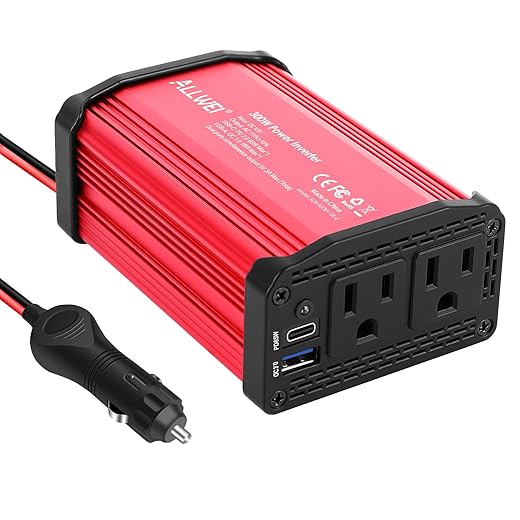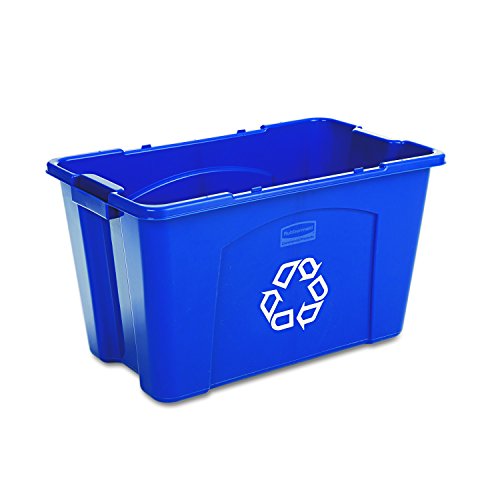Solar-powered recycling facilities are increasingly being implemented as a sustainable solution for waste management. However, it is important to ensure that these facilities comply with regulatory standards to ensure the safety and effectiveness of their operations. Our step-by-step guide provides valuable information on how to navigate through the regulatory requirements when establishing a solar-powered recycling facility. By following our guide, you will be able to confidently plan, design, and implement a facility that is in full compliance with these standards.
Top Solar-Powered Recycling Solutions
Identify Regulatory Standards
To research and identify the regulatory standards and requirements that apply to solar-powered recycling facilities, follow these steps:
- Local Regulations: Begin by researching the local regulations pertaining to solar-powered recycling facilities in the specific area where you plan to establish the facility. Check for any zoning, land-use, or building code restrictions that may apply. Identify any permits or licenses that may be required, such as a solar installation permit or a recycling facility license.
- State Regulations: Next, investigate the state regulations that govern solar-powered recycling facilities in the region. Look for any specific requirements related to safety, environmental impact, waste management, and renewable energy implementation. For instance, you may need to comply with state-specific laws on waste disposal and recycling activities.
- National Regulations: Finally, consider the national regulations that apply to solar-powered recycling facilities. Look for any federal laws or standards related to renewable energy, environmental protection, and waste management. This could include regulations by agencies such as the Environmental Protection Agency (EPA) or the Department of Energy (DOE).
During your research, take note of any specific requirements or standards that need to be met. Pay attention to safety measures, such as fire prevention, electrical safety, and worker protection. Look for guidelines on waste management, including proper disposal of hazardous materials. Additionally, consider any renewable energy implementation standards, such as net metering or incentives for solar energy production.
Ensure that you thoroughly understand and comply with all the identified regulations and requirements prior to establishing your solar-powered recycling facility. Regularly stay informed about any updates or changes to the regulatory standards, as laws may evolve over time. By adhering to the stipulated guidelines, you can ensure the smooth operation of your facility while maintaining safety, environmental responsibility, and adherence to legal requirements.
Consult Experts and Authorities
To ensure a comprehensive understanding of the specific regulations applicable to your region, we recommend consulting with experts in the field and regulatory authorities. Seek guidance from environmental agencies, energy regulatory bodies, and waste management authorities to ensure compliance with all relevant regulations.
To begin, identify the experts and authorities in your region who specialize in the specific area of regulation you are concerned with. This could include experts in environmental science, energy law, or waste management practices. Reach out to them and request a consultation to discuss the regulations that pertain to your specific industry or activity.
During the consultation, ask for clarification on any regulations that may be ambiguous or unclear to ensure that you fully comprehend your compliance obligations. Be sure to take notes and ask for any relevant documentation or resources that can further assist you in understanding and complying with the regulations.
Additionally, it is essential to connect with regulatory authorities such as environmental agencies, energy regulatory bodies, and waste management authorities. These organizations can provide vital information on current regulations, permit requirements, reporting obligations, and any recent updates or changes in the legislation.
Be prepared to provide specific details about your operation or project during these consultations, as this will enable the experts and authorities to provide you with accurate and tailored guidance. It may also be helpful to prepare a list of questions in advance to ensure that all your concerns are addressed during the consultation.
Ultimately, consulting with experts and regulatory authorities will provide you with the necessary guidance and knowledge to ensure compliance with the regulations applicable to your region. It will help you navigate any complexities and stay up-to-date with any changes in the regulatory landscape, allowing you to maintain a strong compliance record and avoid penalties or legal issues.
Design and Construction Planning
To develop a detailed plan for the design and construction of your solar-powered recycling facility, follow these steps:
- Identify regulatory requirements: Begin by reviewing the applicable regulations and guidelines for constructing and operating recycling facilities in your locality. Determine the specific requirements related to waste management, renewable energy sources, and safety measures that you need to adhere to.
- Site selection: Evaluate potential sites for your recycling facility taking into account factors such as proximity to waste sources, access to transportation routes, and availability of sunlight for solar energy generation. Choose a location that is suitable for both waste management operations and solar power implementation.
- System capacity: Determine the anticipated waste volume that your facility will handle and assess the energy requirements accordingly. Calculate the appropriate solar capacity needed to power your recycling operations, which may include machinery, lighting, and other electrical needs.
- Waste management processes: Develop a comprehensive plan for collecting, separating, and processing different types of waste materials. Ensure compliance with regulations governing recycling practices and implement proper waste management techniques to ensure efficient and effective recycling operations.
- Incorporating renewable energy sources: Design a system that integrates solar energy as a primary power source. Calculate the solar panel capacity required to generate enough electricity to meet the facility’s energy needs. Consider factors such as the size and orientation of solar panels, battery storage, and backup power options.
- Safety measures: Establish safety protocols and procedures to ensure the well-being of workers and the surrounding environment. This might include installing appropriate safety equipment, developing emergency response plans, and training staff on safety guidelines.
Remember to consult with experts, such as architects, engineers, and waste management specialists, to ensure your plan aligns with industry best practices and local regulations. Regularly review and update your design and construction plan as needed to ensure compliance and optimize the efficiency of your solar-powered recycling facility.
Permitting and Documentation
Obtain the necessary permits and documentation required for the construction and operation of the solar-powered recycling facility. This process ensures that all legal and regulatory requirements are met before commencing with the project. Here are the steps you need to take:
- Conduct an environmental impact assessment: Evaluate the potential environmental effects of the facility on the surrounding area. This assessment will identify any mitigation measures needed to minimize negative impacts. Obtain the necessary permits and approvals from the relevant environmental agencies.
- Apply for building permits: Contact your local building department and submit the necessary documents to obtain the required permits. These permits ensure that the facility is constructed according to local building codes and regulations.
- Obtain electrical permits: Hire a licensed electrician to design and install the electrical systems for the facility. They will submit the necessary permit applications on your behalf. Ensure that the electrical systems meet safety and efficiency standards.
- Apply for waste management licenses: Contact the appropriate waste management authorities to obtain the required licenses and permits. These licenses ensure that the facility follows proper procedures for waste collection, storage, recycling, and disposal.
Remember to keep track of all documentation throughout the permitting process. Having all the necessary permits and documentation in place before starting the construction of your solar-powered recycling facility will help you avoid delays and ensure compliance with legal requirements.
Implementation and Compliance Monitoring
Construct the solar-powered recycling facility according to the approved design and regulatory requirements. Begin by obtaining the necessary permits and ensuring that the site is prepared for construction. Clear the land and level it properly for the smooth installation of the facility. Next, follow the approved design plans and carefully construct the different components of the facility, including solar panels, recycling machinery, and waste management infrastructure. Pay close attention to all the details specified in the design to ensure accuracy and functionality.
Once the construction is complete, it is important to implement monitoring systems to regularly assess the facility’s compliance with the regulations. Begin by installing energy monitors to constantly track and record energy production levels. This will help evaluate the efficiency of the solar panels and ensure they are generating the expected amount of electricity. Furthermore, establish monitoring processes for waste management to ensure that recycling processes are carried out correctly and efficiently. Regularly inspect the facility to determine if safety protocols are being adhered to, such as proper storage of hazardous materials and the use of personal protective equipment.
By implementing these monitoring systems, we can efficiently track compliance with regulatory requirements and promptly address any issues that arise. Regular monitoring will provide valuable data and insights that can be used to optimize the facility’s performance and ensure its long-term success.
Regular Audits and Corrective Actions
Regular audits are an essential component of maintaining compliance with regulatory standards. Conduct audits at regular intervals to evaluate ongoing compliance with the established standards. We recommend using a checklist or a standardized audit template to ensure a thorough examination. For example, in the healthcare industry, audits can encompass various aspects such as proper documentation, adherence to privacy regulations, and safety protocols.
During the audit process, carefully review all relevant documentation, procedures, and practices. Identify any instances of non-compliance promptly. Non-compliance can include anything from missed deadlines to failure to follow established protocols. For instance, if an audit reveals that a company failed to implement appropriate data protection measures, it must be considered a non-compliance issue.
When non-compliance is identified during an audit, it is crucial to take immediate corrective actions to rectify the issues. Assign the responsibility of addressing the non-compliance issue to a relevant team or individual. Clearly communicate the identified issues, and provide specific instructions on how to correct them. For instance, if the non-compliance was due to inadequate training on handling hazardous materials, ensure that the appropriate training programs are implemented promptly.
Maintaining records of audits, corrective actions, and any improvements made is vital to demonstrate ongoing compliance efforts. Documenting the entire process helps in tracking the history of audits, identifying patterns of non-compliance, and measuring the effectiveness of corrective actions. It is also valuable for future reference and potential regulatory inspections. For instance, after addressing a non-compliance issue, record the actions taken, specify the improvement measures, and document the date of implementation.
By regularly conducting audits, promptly addressing non-compliance issues, and keeping thorough records, we can ensure ongoing compliance with regulatory standards. This approach not only helps to avoid fines, penalties, and legal consequences but also enhances the overall efficiency and effectiveness of our operations.
Key Takeaways
In conclusion, it is crucial to recognize the significance of complying with regulatory standards when implementing a solar-powered recycling facility. Throughout the guide, we have emphasized the importance of continuous monitoring, documentation, and periodic audits to ensure ongoing compliance with these standards. By adhering to these guidelines, not only do we mitigate potential risks and avoid penalties, but we also contribute to the sustainability of our environment and the success of our facility. Remember, regulatory compliance should be a top priority throughout the entire lifespan of the facility, from inception to operation and beyond. Let us remain vigilant in our efforts and commit to keeping our solar-powered recycling facilities in alignment with the highest regulatory standards.








![[Upgraded] 30A Solar Charge Controller, 12V/ 24V Solar Panel Regulator with Adjustable LCD Display Dual USB Port Timer Setting PWM Auto Parameter](https://m.media-amazon.com/images/I/41NTKPSODmL.jpg)









